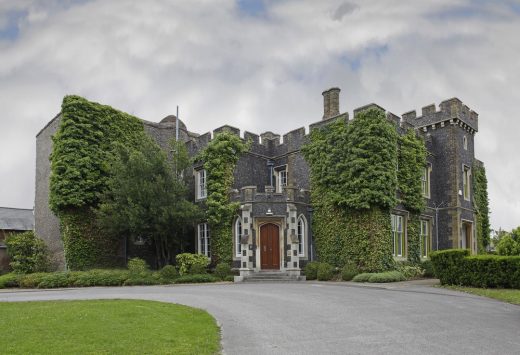How To Regenerate A Period Listed Building Guide, House Purchase Guide, Property Sales Advice
How To Regenerate A Period Listed Building
27 July 2020
To preserve their value, regenerating period listed buildings require careful handling. Such projects are stimulating for architectural designers as they explore design methods that can improve listed buildings without interfering with their unique features.
As a creative designer, you may need a broad selection of materials for doors, windows, finishing, and interior works to help retain the originality of the period listed buildings and their essential features. Some of the common materials you may need to work with may include high-quality window sills, architraves, skirting boards, accessories and flooring, and veneered door linings, which are available in specialty shops like The Skirting Board Shop.
What Is A Listed Building?
A listed building is a building that’s preserved and protected by the government because of its national significance.
Why Are Buildings Listed?
There are four main provisions that qualify buildings for listing. They include group value, historical association, historic interest, and architectural significance.
- Group Value: A building is listed under the statutory of group value when it’s considered significant to a country’s national heritage. A building becomes a national heritage site when it represents the culture and history of a nation.
- Architectural Significance: Buildings listed under this category have special features on their design models or decorations, earning them architectural interest and making them worthy of preservation. Ancient architectural palace designs fit in this category.
- Historical Association: Buildings listed under historical association feature important events or iconic figures with national recognition. Here, you’ll find buildings relating to a nation’s fight for independence or those built in memory of national legends.
- Historic Interest: Buildings listed as historic interests may represent structures of its category from the past. The nation might preserve a home to keep the memory of its designs that existed in the past. Buildings of historical interest exemplify related historical aspects such as in military, economic, or national social features.
How To Regenerate A Period Listed Building
Irrespective of the type of listed building project to regenerate, pay close attention to the following steps to successfully regenerate a period listed building:
- Evaluate The Listed Building
Building evaluation involves examining the structure in order to determine all areas that need work. During the assessment, take note of all essential features that you must preserve. In most cases, the Secretary of State provides basic guidelines on how to do the assessment and the architectural designs to observe.
During the assessment, take note of the building’s colors and any opportunities for improvement. Make sure that your reasons for improvement are convincing. Also, try as much as possible to retain the original elements of the building.
- Get Approval From Conservancy Authorities
Present your architecture-focused assessment report to the conservation office. They will guide you accordingly as your share your regeneration plan for the building. Be ready to accept newer suggestions because conservation officers better understand the building you would like to regenerate and can help you highlight focus areas of the project.
- Pick The Right Tools And Materials
Now that you have a master plan of the improvements to make on the listed building, it’s time to go for the right tools and materials. Once more, be sure to consult with the conservation office to avoid bringing substandard materials onsite; determine every impending task and get the right tool for that work. Organize the right tools and materials to avoid project inconvenience upon commencement. The easiest way to go is to outline all tasks and have a checklist for the tools and materials needed for each task.
- Do The Actual Work
Always remember that it takes exceptional skills to make alterations without damaging the listed building. Also, prioritize on repairing to retain original features instead of replacing them. If you must replace a damaged feature, channel every effort to ensure the replacement looks like the original.
Whatever alteration you make, maintain the original texture, color, and size of the original materials used.
- Make Interior Alterations
Retain the originality of the objects, fixtures, and fittings in the interior of the listed building. Since reputable and licensed architects are the best in making excellent modifications, your architectural expertise will be instrumental in preserving the art of the building while undertaking atypical modification tasks.
If you’re replacing damaged decoration, ceilings, walls, and floor designs, working with custom-made designs will help retain the original color, texture, and size of materials used for the interior designs.
- Make Exterior Alterations
Exteriors speak volumes and is the first thing people would notice. Once again, carry out repairs as much as possible and only replace the sections of damaged features with materials of the same size, color, and texture. Carefully work on the doors, windows, walls, balcony, railings, and all other external features that need repair or, worse, replacement.
Conclusion
To successfully regenerate a period listed building, you need a concrete plan. The first step is to assess the building and identify the sections and features that need repairs or replacement. Consult with building conservation authorities to vet your list by picking acceptable adjustments, as well as provide you with work guidelines. Use your list to select the right tools and materials for the needed work. Get to the actual regeneration work and focus on both the interiors and the exteriors. Remember to maintain the originality of all features, taking into consideration the texture, color, and size of the materials used for the features of the listed building.
Comments on this How To Regenerate A Period Listed Building Guide article are welcome.
Property Articles
Comments / photos for the How To Regenerate A Period Listed Building Guide page welcome







